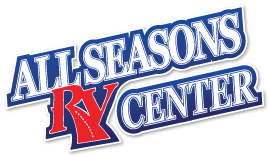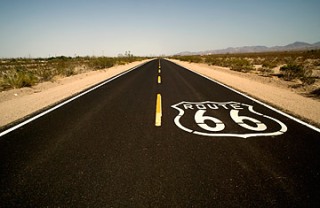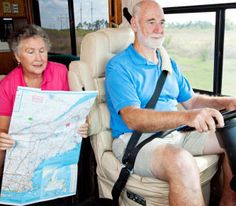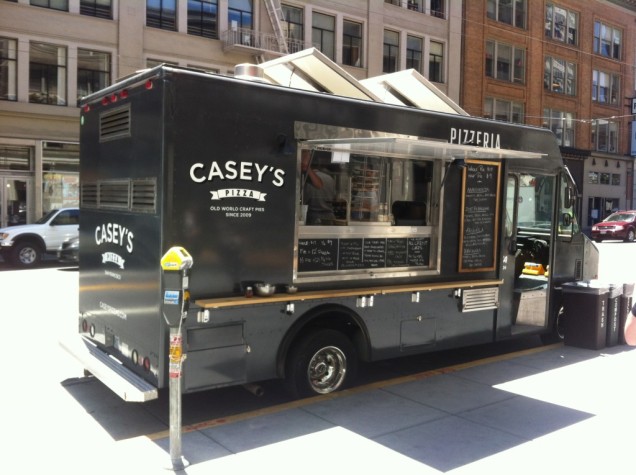All Seasons RV is a proud member of the ROUTE 66 RV Network, the largest network of independent RV dealers in North America. But not too many people know the real history of America’s Mother Road. Time magazine offers a great summary here:
For nearly six decades, a two-lane road, running 2,448 miles, connected Chicago to Los Angeles. It was the path to Western promise for “Okies” escaping the Dust Bowl in the 1930s, the road under the soles of American nomads like Jack Kerouac. Route 66 was once considered an essential artery, its travelers a measure of America’s pulse. But by the mid-1980s, the road was deemed obsolete.
Twenty-five years ago on June 27, Route 66 was decommissioned. But even as the no-tell motels and mom-and-pop shops along the road disappeared, the fables of America’s “Mother Road” continued to ramble on.
In the 1920s, federal highway officials, faced with growing automobile ownership (registered motor vehicles grew from 500,000 in 1910 to almost 10 million in 1920) and the impracticality of disjointed, named trails, began to develop a numbered road system. Oklahoma real estate agent and coal company owner Cyrus Avery worked with John Woodruff, a highway proponent, to advocate a diagonal roadway running from Chicago to Los Angeles.
As an Oklahoman, Avery, who was also largely responsible for getting America’s Main Street its name, lobbied for the route because it would redirect traffic from Kansas City, Mo., and Denver and boost the state’s prosperity. The American Association of State Highway and Transportation Officials (AASHTO) initially named the road Route 60 and then Route 62.
Avery “strenuously objected” to the switch, even penning a letter to AASHTO executive secretary William Markham saying, “You are making a joke of the interstate highway.” On April 30, 1926, the route was renamed. Avery became known as the “Father of Route 66,” with Springfield, Mo., its birthplace.


 As a passenger in any vehicle, you may think that you’re off the hook from having to do any work, but you’re really a second pair of eyes and hands for the driver. Knowing how to be the best shotgun rider can help out your driver and make the ride that much more fun (and safe) for everyone.
As a passenger in any vehicle, you may think that you’re off the hook from having to do any work, but you’re really a second pair of eyes and hands for the driver. Knowing how to be the best shotgun rider can help out your driver and make the ride that much more fun (and safe) for everyone.
 for food trucks are the travel trailers, camper van’s, and toy haulers because they can be converted the easiest rather than some of the bigger luxury RV’s. Although, there are some food trucks that utilize the entire space of those luxury RV’s. The food trucks typically have a window or two depending on the length of the truck, and a kitchen equipped with all the cooking appliances they need to properly prepare, cook, and store the food that they serve.
for food trucks are the travel trailers, camper van’s, and toy haulers because they can be converted the easiest rather than some of the bigger luxury RV’s. Although, there are some food trucks that utilize the entire space of those luxury RV’s. The food trucks typically have a window or two depending on the length of the truck, and a kitchen equipped with all the cooking appliances they need to properly prepare, cook, and store the food that they serve.



